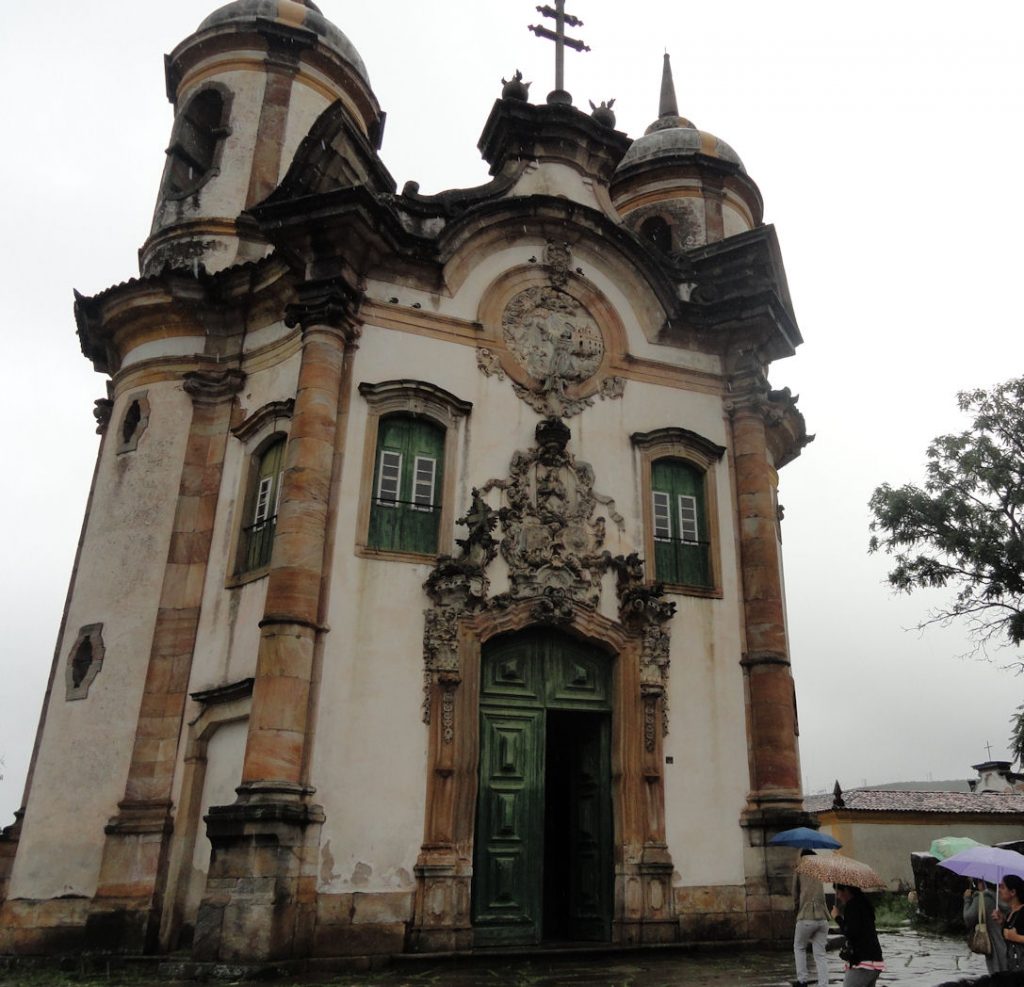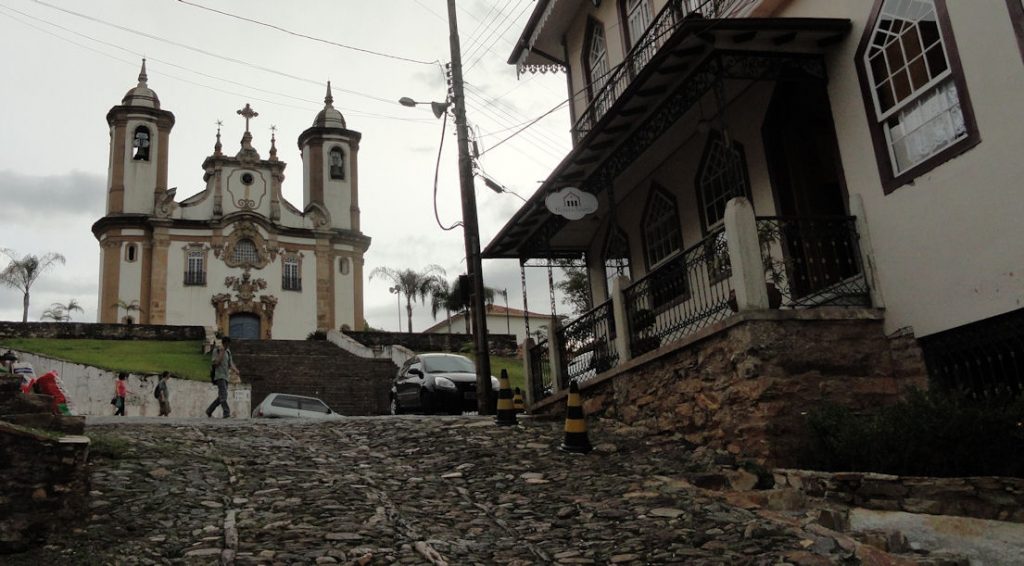
Ouro Preto means black gold in Portuguese. The black gold is an ore of gold mixed with iron ore. It looks like dirt and I don’t believe I would pay attention to it if I stepping in a pile. But this black gold financed the prosperity of the city of Ouro Preto and of the whole region around it. The people of Ouro Preto, at least the ones running the show, poured their wealth into ornate baroque churches that dot the city. These and the general rich architectural tradition made Ouro Preto a UNESCO World Heritage place.

I have included pictures of the outsides of churches. The Church of Saõ Francisco de Assis is considered to be a masterpiece of Brazilian architecture, but they are all interesting Cameras are not allowed inside, so I don’t have pictures. Take a look at my posting from the São Francisco church in Salvador to get an idea, although the Ouro Preto churches are less well maintained/restored. There are very ornate carvings and sculptures. In fact, Baroque when used as an adjective means describes something that is ornate, maybe too ornate.
Baroque was on the way out as a style by the time the people in Ouro Preto got the word. The most famous Brazilian artist of this period was Aleijadinho, the little cripple. Although he suffered serious physical problems, he still produced a prodigious amount of work, which you can see all around central Minas Gerais. You can see the decline of Baroque in the works in the churches, both because the style was waning but also because the gold deposits were being used up, so there was less cash to support the projects.
I am not a big fan of the baroque. They dazzle the eye with detail. There are many of those round faced angels and elaborate filigrees. But there is a darker side. As you look closely, you see a significant cult of death, lots of skulls and suffering. The Church promulgated the Baroque style, among other things, as a way to attract believers back to the Church and away from the Protestants. In the baroque churches, you see both the carrots and the sticks. The art is elaborate, sensual, and even voluptuous. But then included are the very graphic depictions of suffering, deprivation and death. So the baroque appeals to both desire and fear. Yes, there is the feast for the senses, but we all are alive for a short time and dead forever after, so better prepare for that. According to the Church, there is but one way to do that and they control the tollgate.

You have to understand the art and practices of the past in human terms, as you would something today. Human nature doesn’t change and the people of the past reacted in ways that we would recognize. If we put these great works of art in modern context, we are not talking the New York Museum of Fine Arts. The better analogy is Disneyland. After things have been around a long time, they acquire the patina of respectably. On the other hand, we tend to disrespect the work of our contemporaries, especially if they are popular. But recall the context the niche each is filling. I have always been impressed by the innovations in arts, entertainment, crowd control and transport employed at places like Disneyland.
I have visited “classy places” like the Vatican or Venice. The same processes and purposes are present. This is not to denigrate or trivialize the great accomplishments of artists past, but it is to recognize the human spirit in each generations. The true heirs of Donatello, Leonardo, Michelangelo and Raphael (besides mutant turtles) are the engineers at amusement parks, or maybe video game designers. It is not those self-important guys who posture as professional artists, producing work that few people want and even fewer really understand.

The churches are very pretty, but there was more pressing business in a frontier region like Minas. Things like roads, canals & universities should come first. But I realize that mine is a very secular point of view and and not very artistic. I suppose that a thing of beauty is a joy forever and forever makes the difference.
